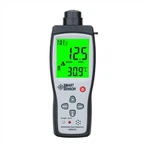There are five basic steps to using a microscope
First, put the microscope: right hand holding the arm, left hand holding the mirror base, put the microscope on the laboratory table, slightly to the left from the edge of the 7 cm or so, put the eyepieces and objective lenses.
Lighting
1, turn the converter, so that the low-magnification objective lens aligned with the through hole, the front of the objective lens and the carrier table to maintain a distance of 2 cm.
2、Aim a larger aperture at the through-hole. With the left eye on the eyepiece and the right eye open, turn the reflector so that the light is reflected through the through-hole into the lens barrel. Until you see a brighter field of view.
Third, the placement of the slides
1、Place the slide specimen to be observed on the carrier table and press it down with the slide clamp, and the specimen should be right in the center of the through-hole.
Observation
1, turn the coarse focusing spiral, so that the lens barrel slowly down, eyes from the side, until the objective lens close to the slide specimen, so as to avoid the objective lens touching the slide specimen.
2. Look into the eyepiece with the left eye while turning the coarse focusing screw in the opposite direction, so that the barrel of the mirror rises slowly until the object image is clear.
until you can see the object image clearly. Then turn the fine focusing spiral slightly to make the object image clearer.
V. Putting away the mirror
1、Delete the slice
2, turn the converter, so that the low-magnification objective lens or no objective lens to align with the through-hole, down the barrel of the mirror, close to the carrier platform
3、Reflector standing put
What is the aperture on the microscope
The aperture on the microscope is the hole on the back of the carrier stage, rotating the size of the aperture can be adjusted to regulate how much light enters the microscope, that is, the adjustment of the brightness when observing cells.
A large aperture is one that allows more light to pass through the microscope, and is used when the light is dimmer. Smaller apertures are used in brighter places, or when looking at darker colored organelles in cells, to reduce light.






